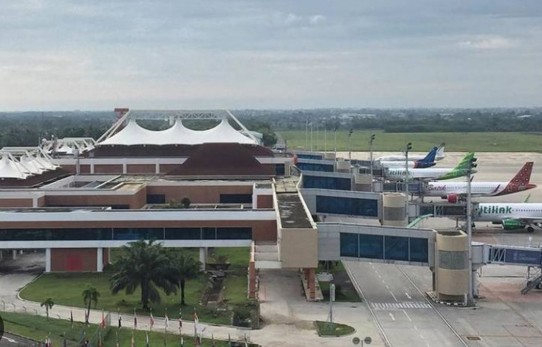The Indonesian government has officially designated five new airports as international airports in early 2025, bringing the total number of international airports in the country to 22. Director General of Civil Aviation Lukman F. Laisa stated that the addition aims to strengthen national and international connectivity to promote more balanced development and stimulate regional economic growth.
The announcement follows two official decrees: the Minister of Transportation Decree No. KM 26/2025 and KM 30/2025.
“The addition of international airports is carried out in a measured way, taking into account infrastructure readiness, potential for international air traffic, and integration with intermodal transport systems,” said Lukman on Wednesday (August 6, 2025), as quoted by Kumparan.
The five airports gaining international status include:
- Sultan Mahmud Badaruddin II Airport in Palembang
- H.A.S. Hanandjoeddin Airport in Bangka Belitung
- Jenderal Ahmad Yani Airport in Semarang
- Syamsuddin Noor Airport in Banjarmasin
- Supadio Airport in Pontianak
These additions increase the number of international airports from 17 (as of Ministerial Decree No. KM 31/2024) to 22, signaling a major push to enhance global accessibility in more Indonesian regions.
Lukman emphasized that the designation is based on a comprehensive evaluation process. This includes domestic and international traffic potential, growth targets for international routes, geographic distribution, distance from existing international airports, multimodal transport links, and the readiness of supporting services such as immigration, customs, and quarantine.
“We ensure that every designation is made carefully and based on accurate data,” Lukman asserted. “We are committed to ongoing supervision and support for these airports to maintain the 3S1C standards: Safety, Security, Services, and Compliance.”
However, Lukman made it clear that the international status is not permanent. The Directorate General of Civil Aviation (Ditjen Hubud) will continuously evaluate each airport’s performance—including passenger and cargo volumes, flight frequencies, and supporting services readiness.
“These evaluations will determine whether an airport maintains or loses its international status, depending on its relevance to service demand and aviation industry developments,” Lukman added.
This policy aligns with President Prabowo Subianto’s broader vision, Asta Cita, which includes strengthening both national and international connectivity as a foundation for regional progress.
According to Cabinet Secretary Lieutenant Colonel Teddy Indra Wijaya, President Prabowo issued a direct order to increase the number of international airports, especially in regional areas.
“In a recent video conference, the President instructed the opening of as many international airports as possible to stimulate regional economic circulation and boost tourism,” Teddy shared via the official Instagram account of the Cabinet Secretariat.
During the virtual meeting held from the President’s residence in Hambalang, West Java, several ministers and top officials discussed updates on economic, agricultural, and maritime development programs.
With this latest expansion, Indonesia aims to ensure a more competitive, open, and inclusive aviation network that benefits all regions.
“This is our commitment to provide equal, high-quality air services that meet global standards for all Indonesians,” Lukman concluded.
Source: Kumparan, Detik, CNN Indonesia
Special Photo Credit via Idenesia.co


